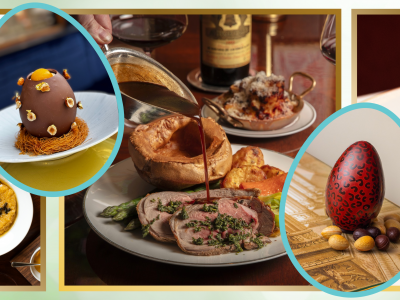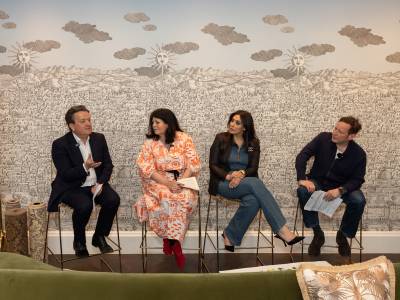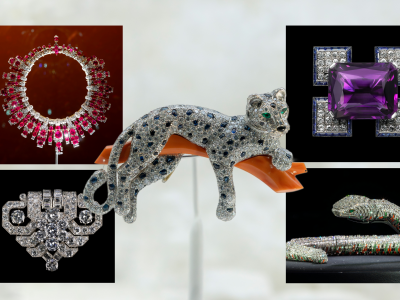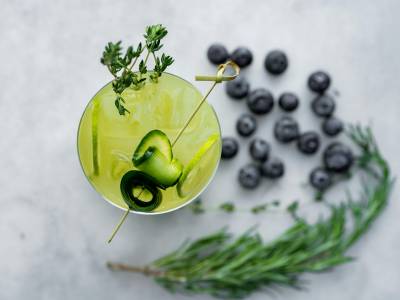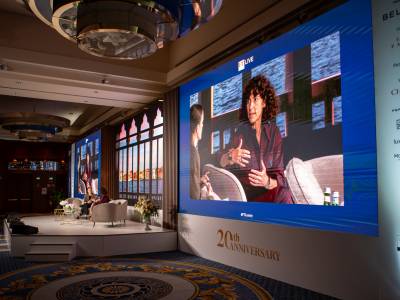You might go to a Burberry store for a bag or coat, but would you turn to this quintessentially British luxury brand if you were looking for a cappuccino? Would Gucci be high on your list if you were in the mood to visit a museum? And if you were sourcing a floral display for a party, would you consider popping into Calvin Klein?
One-stop lifestyle shops
14th March 2016
As luxury brands look for more innovative ways to entice customers into stores, they are providing intriguing add-ons, such as cafés, exhibitions and roof-raising concerts
Since they first opened their doors, luxury stores have existed both as retail centres and temples of design. But over the past few years, many celebrated names have undergone a subtle change. They are selling more than just the things on the hangers; many are focusing on the experiential and enticing customers in new ways, using art or food. Where shops were once just shops, many stores are now becoming multi-functional spaces.
One reason luxury brands are lavishing more attention on the shopping experience is to balance the growth of online and store sales. According to research published this summer by the New York-based Luxury Institute, 26 per cent of affluent women and 23 per cent of affluent men report they have cut back on in-store apparel purchases in the past year. By contrast, 52 per cent of wealthy men and 46 of wealthy women have increased the amount bought online. Meanwhile, consultancy firm McKinsey says online luxury fashion sales are set to grow by 18 per cent between now and 2018 in the UK, and by a remarkable 70 per cent in China.
There’s a willingness to share space with other brands in these new style emporia. Private White VC, an exciting new name in luxury menswear, will feature, from September, a gift bar with curated products, including DR Harris toiletries, Dents gloves, and Lock & Co hats, in its Mayfair store. “We’re an authentic British brand and we want to promote and support others who share our values. The gift bar will offer customers products that – like ours – are made in Britain; from belts produced by a tiny leather goods company based in Hertfordshire, to the Royal perfumier Floris,” says retail director Andrew Allan. “The need for experiences over straightforward shopping has become much more important. What consumers with more exclusive tastes now crave is a unique experience.”
As luxury brands associate themselves more closely with experiences, stores are becoming art galleries. This October, Galeries Lafayette in Paris hosts American artist Alex Prager’s first solo French exhibition, showcasing her intricately staged photographs and films that draw on the Golden Age of Hollywood. Gucci now has a museum and exhibition space in Florence – a bold, perhaps even cheeky, move when you consider the great works of art on display just a few hundred metres away at the Uffizi.
Across the channel, jeweller Stephen Webster’s new Mount Street store, due to open in September, will have two very different spaces. An elegant and contemporary boutique area will showcase its jewellery collections for men and women, while another space will host exhibitions and events. Webster owns a collection of works by Tracey Emin, so perhaps these will appear on the walls. The design is based on the Beverly Hills flagship store, which has become a mainstay of the LA cultural scene, hosting exhibitions, private dinners and live music events.
It’s happening at the haute hipster end of the market, too. Concept store Hostem, in Shoreditch, is also fusing art and retail. The store features art and exhibitions on the top floor while selling brands such as Comme des Garçons and Lanvin below. Similarly, high-end design store Clerkenwell London, which opened in August, combines curated collections of music, art and fashion, set out in a range of conceptual rooms, with a bar and kitchen.
Stores can be used to emphasise a brand’s cultural heritage. In autumn, Danish jewellery, watch and silverware brand Georg Jensen is opening its first concept store, in Beijing. Cultural life in Denmark will be reflected by an art gallery, bookshop, and café serving Danish food. “I want to introduce the Georg Jensen story in a very dynamic way, as we enter the Chinese marketplace,” says David Chu, CEO and creative director. “Creating an experiential environment gives the consumer a more tangible understanding of what our brand stands for.”
Chu explains that the House of Jensen came about because “we want to give our consumers a 360-degree view of our product, so we looked at ways to transcend the traditional retail model, while still offering a place for the consumer to shop.” The company is sharing its space with the Beijing Center for the Arts, a leading contemporary gallery, housed in a hutong – a traditional Chinese courtyard home. Chu says that “blending the traditional exteriors of the hutong with contemporary interiors was a big goal of mine. It will transcend the typical shopping experience as consumers can now enjoy art, dining, and commerce in one place.”
Luxury is increasingly associated with lifestyle and experience, rather than simply with products. Nearly three quarters (70 per cent) of executives interviewed by McKinsey for a report in 2013 regarded their brands as luxury lifestyle. And a good way to introduce consumers to a brand’s diverse lifestyle elements is by creating a space with a strong focus on offerings and services, instead of a purely product-based store. Armani, for instance, has cafés and restaurants in its stores, and once you have experienced these lifestyle elements, you can go one further and buy an actual place to live. In addition to his real estate collection in Dubai, Mr Armani has just agreed to design apartment interiors for a new 117-storey building in Mumbai.
Cafés are one of the simplest ways to allow customers to extend their experience of the brand – and they have the added advantage of encouraging people to linger in the store. Maison Kitsuné has a café in its Tokyo store – recently joined by another one in Paris – which emphasises the brand’s luxury French image, as well as allowing weary shoppers to pause for a café au lait and croissant, and then resume their browsing with increased energy and enthusiasm.
The need for experiences over straightforward shopping has become much more important. What consumers with more exclusive tastes now crave is a unique experience
Thomas’s café at Burberry’s UK flagship store in Regent Street is named after the company’s founder. It opened this summer, offering quintessentially British dishes such as tea and scones, as well as lobster and chips, with all food made from ingredients sourced locally from small-scale farmers and artisan suppliers around Britain. The decor – which features high ceilings, black-and-white marble floors and black lantern chandeliers – is in keeping with the classically elegant and restrained Burberry look. According to Christopher Bailey, chief creative and CEO of Burberry, the café was developed because the company “wanted to create a space where our customers can spend time relaxing and enjoying the world of Burberry in a more social environment”.
Thomas’s follows hot on the heels of Ralph Lauren’s first New York restaurant (its third worldwide), the Polo Bar, which opened in January. Set in Lauren’s flagship store, the bar has been created to fit in with the image of the brand, featuring parquet flooring, tan leather banquettes and equestrian art. On the menu are burgers, crab cakes and steaks – fittingly for this heritage brand, the steak is from the designer’s Colorado ranch.
The pop-up shop, initially regarded by the luxury sector as a vulgar gimmick, has now been embraced as a way to introduce a greater sense of theatre. As well as creating topicality and urgency, it provides opportunities to collaborate with other labels. Recently, Calvin Klein in Madison Avenue, New York, hosted a pop-up shop by florist Lauren Messelian, an American-born fine arts student whose clients include Stella McCartney and Tory Burch. Messelian arranged succulent greens and stones in angular glass, creating what were described as “portable living sculptures, uniting art and design”.

Another modern twist on retail, also in New York, comes in the form of The Apartment by The Line, in SoHo. Here, the space is curated to look like someone’s (particularly stylish) home – the difference being that everything on display is for sale. It is an extension of The Line’s e-commerce site, illustrating how online and on-the-ground retail are working symbiotically. As you wander around the light-filled, 19th-century apartment, you can pick up a Reed Krakoff white t-shirt, a Robert Mapplethorpe artwork or a pair of Proenza Schouler trousers; it’s as if you are pilfering someone’s beautifully curated personal effects. With a marked absence of pushy sales assistants, The Appartment succeeds in softening the experience and in engaging with the consumer in a way many brands are trying to achieve.
Increasing footfall and dwell time in stores is an ever greater priority for luxury retailers, according to Michelle Whelan, shopper marketing specialist at marketing agency LIDA. “The profile of luxury shoppers has been evolving since the economic downturn,” she says. “Today, luxury shoppers are a much more varied bunch, ranging widely in ethnicity, in attitudes about ownership versus use, and even in how they want to interact with retailers and brands. With wide-ranging tastes and a unique set of values, this is a transformation that is pressuring luxury retailers to redefine their brand experiences.”
“Retail theatre” is a well-established concept, but as luxury consumers turn to online shopping, it is beginning to enter a new phase. For the consumer, this challenge to the creativity of the world’s most sought-after brands is recasting the role of the luxury store in new and exciting ways.




